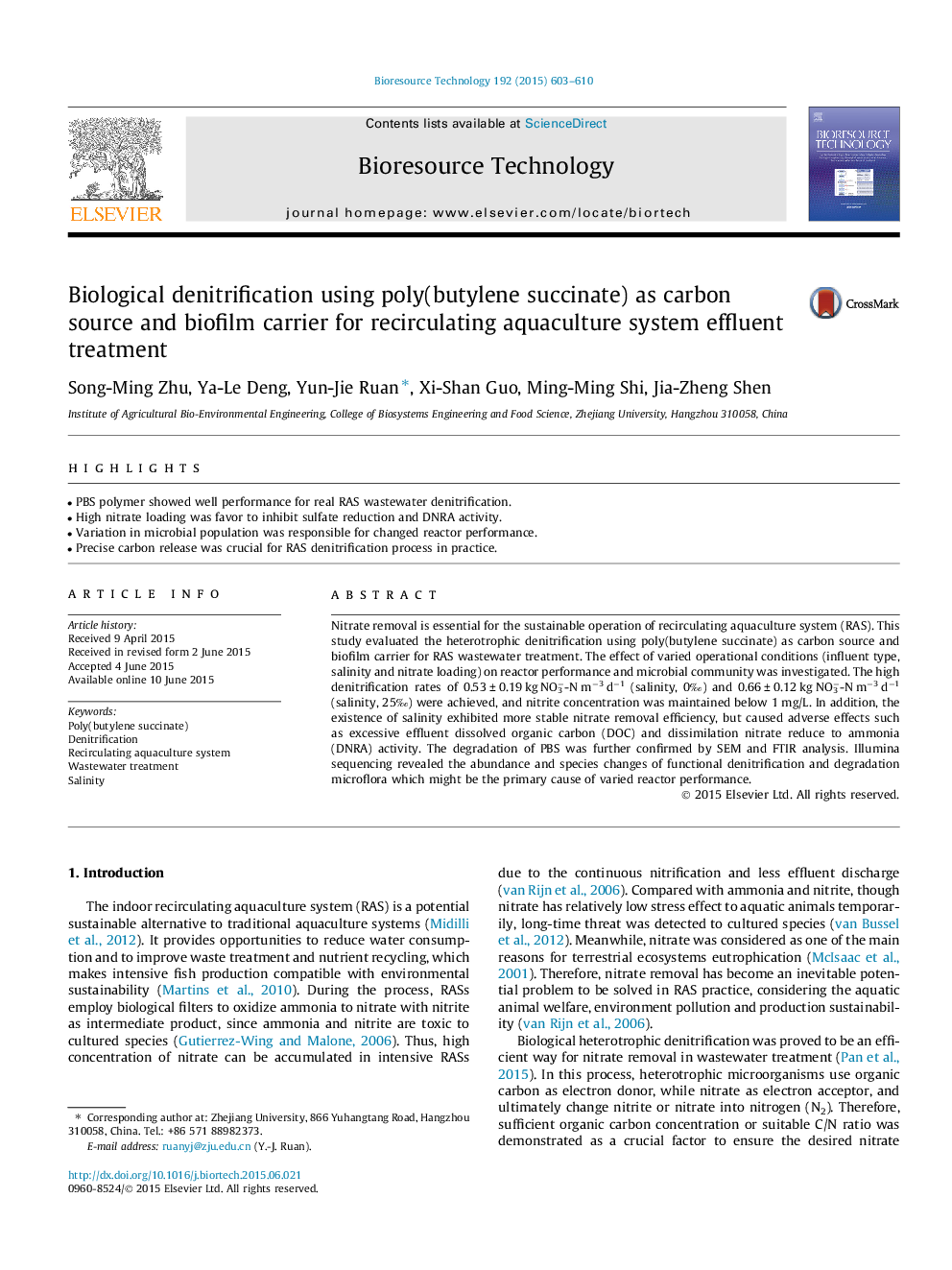| Article ID | Journal | Published Year | Pages | File Type |
|---|---|---|---|---|
| 7074309 | Bioresource Technology | 2015 | 8 Pages |
Abstract
Nitrate removal is essential for the sustainable operation of recirculating aquaculture system (RAS). This study evaluated the heterotrophic denitrification using poly(butylene succinate) as carbon source and biofilm carrier for RAS wastewater treatment. The effect of varied operational conditions (influent type, salinity and nitrate loading) on reactor performance and microbial community was investigated. The high denitrification rates of 0.53 ± 0.19 kg NO3â-N mâ3 dâ1 (salinity, 0â°) and 0.66 ± 0.12 kg NO3â-N mâ3 dâ1 (salinity, 25â°) were achieved, and nitrite concentration was maintained below 1 mg/L. In addition, the existence of salinity exhibited more stable nitrate removal efficiency, but caused adverse effects such as excessive effluent dissolved organic carbon (DOC) and dissimilation nitrate reduce to ammonia (DNRA) activity. The degradation of PBS was further confirmed by SEM and FTIR analysis. Illumina sequencing revealed the abundance and species changes of functional denitrification and degradation microflora which might be the primary cause of varied reactor performance.
Keywords
Related Topics
Physical Sciences and Engineering
Chemical Engineering
Process Chemistry and Technology
Authors
Song-Ming Zhu, Ya-Le Deng, Yun-Jie Ruan, Xi-Shan Guo, Ming-Ming Shi, Jia-Zheng Shen,
